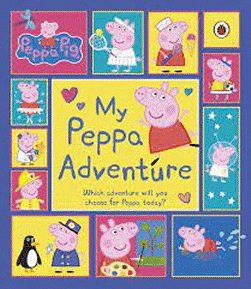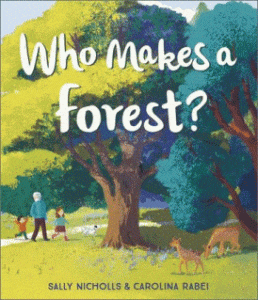
Peppa Pig: My Peppa Adventure
Peppa Pig: My Peppa Adventure
Peppa Pig
Ladybird, 2022
32pp., pbk., RRP $A14.99
9780241543498
Although formal reading instruction usually doesn’t begin until a child starts “big school”, so much of the rate of success and achievement is dependent on the groundwork that has gone before. Mem Fox has said, ” If every parent -and every adult caring for a child – read aloud a minimum of three stories a day to the children in their lives, we could probably wipe out illiteracy in one generation!”
But this new Peppa Pig adventure offers an even greater opportunity for our littlest readers to start developing those early reading behaviours that are crucial to underpinning reading development because it requires the child to create their own story. This is a choose-your-own adventure for the very young.
Starting with a page of pictures of possible destinations, the child chooses where in the world they want to travel – to the jungle, the ocean, the desert, the city or even outer space – and then on succeeding pages they use the picture cues to decide which of Peppa’s family and friends they will take with them; their clothing; their lunchtime menu; how they will travel and so on, building an entire adventure as they turn the pages. There are musical instruments to play, shops to visit, parties to attend – and each is the child’s choice, And when they return home safely, they can go back to the start and map out another adventure to tell! The power of print over the fleeting screen!
While listening to stories and building the pictures in their imagination is vital, having the scaffolding to build your own story with your favourite character is brilliant – there are so many skills involved and learning that takes place, not to mention the empowerment of being the author and making the decisions that this is, IMO, a must-have in the library of any beginning reader. In all my years of reading and reviewing, showing and sharing books with little ones, books that are interactive with lift-the-flaps and other devices, I don’t recall one in this choose-your-own format for this age group. Love it!
